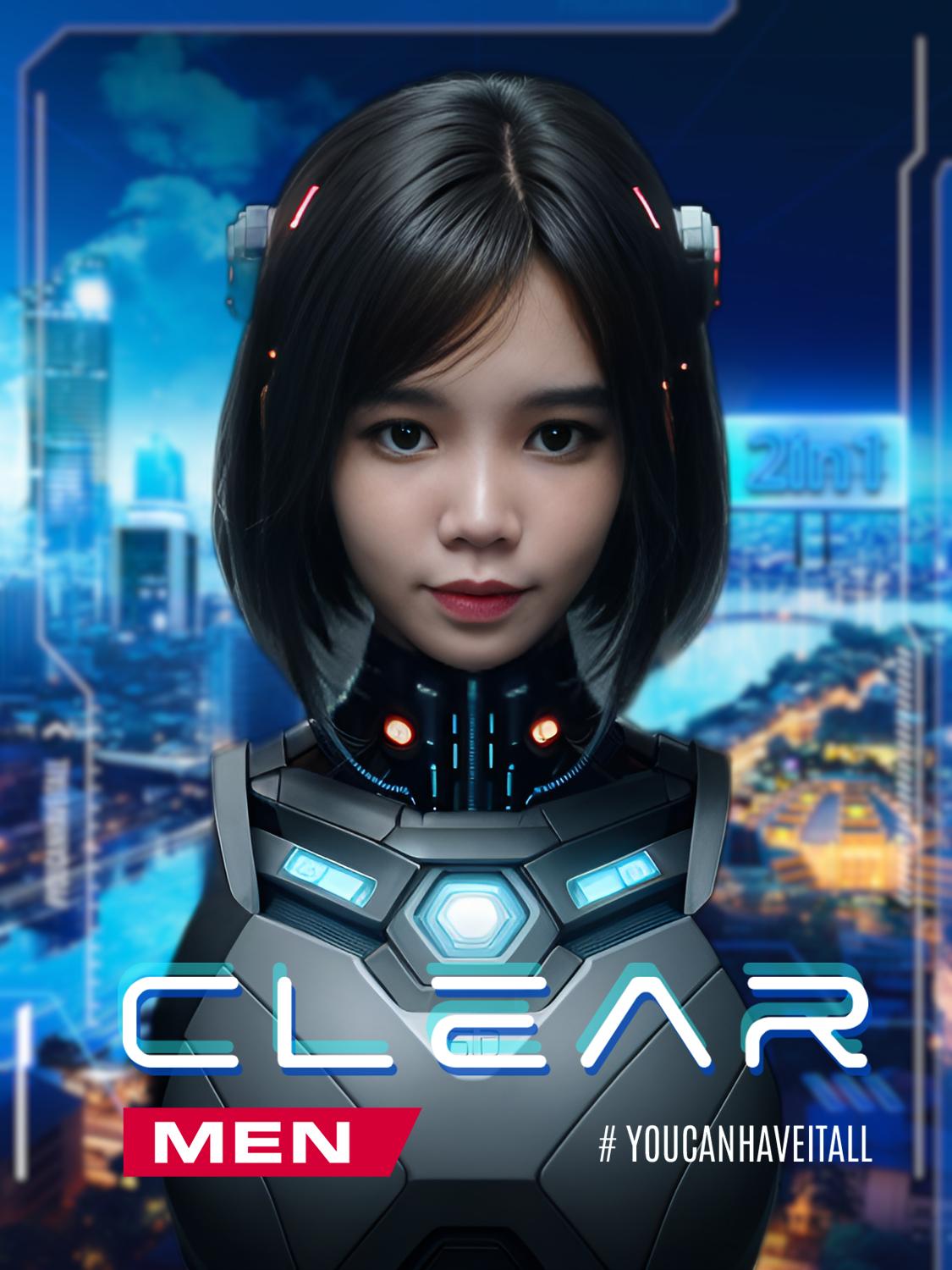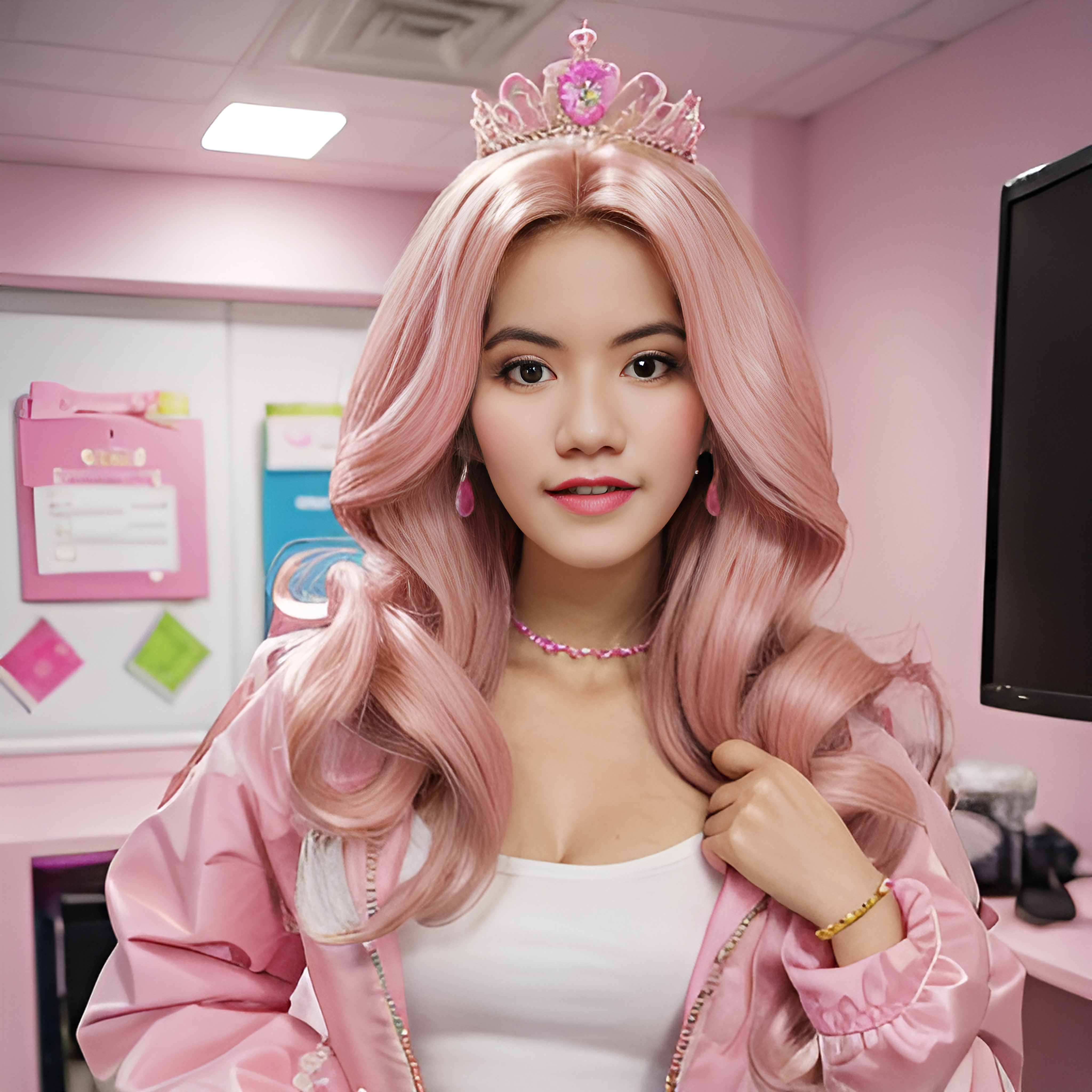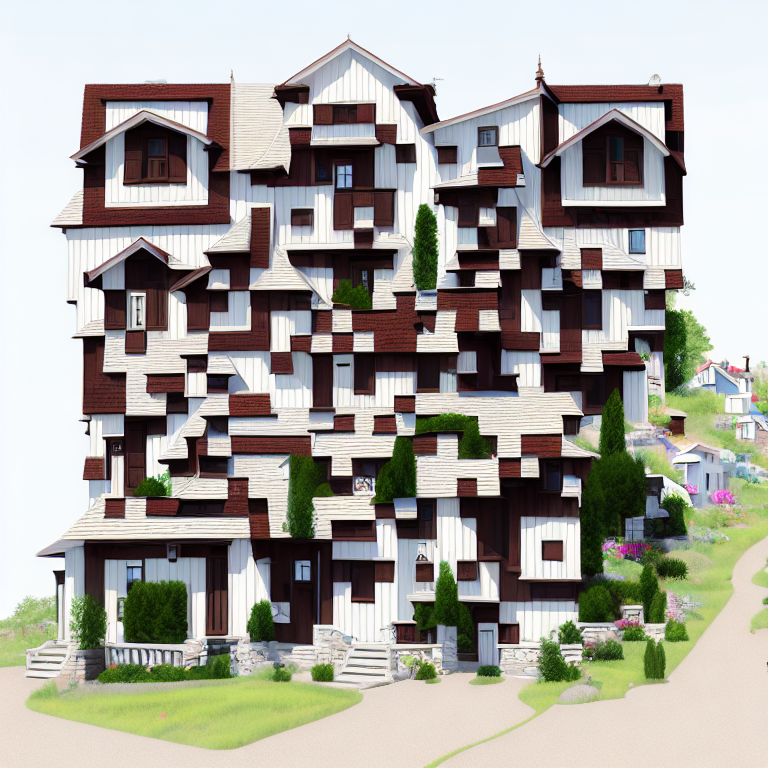diffuser-c-c-2024
Maintainer: expa-ai

1

| Property | Value |
|---|---|
| Run this model | Run on Replicate |
| API spec | View on Replicate |
| Github link | No Github link provided |
| Paper link | No paper link provided |
Create account to get full access
Model overview
The diffuser-c-c-2024 model is a text-to-image generation tool developed by expa-ai. It can be used to create images based on textual descriptions, similar to models like gfpgan, kandinsky-2.2, animagine-xl-3.1, deliberate-v6, and idm-vton.
Model inputs and outputs
The diffuser-c-c-2024 model takes in a textual prompt, an image, and various other parameters like width, height, and sampling method. It then outputs an array of image URLs representing the generated image.
Inputs
- seed: An integer used to initialize the random number generator, allowing for reproducible results.
- image: An image URL that can be used for image-to-image or inpainting tasks.
- width: The desired width of the output image.
- height: The desired height of the output image.
- prompt: The textual description used to guide the image generation process.
- sampler: The sampling method used to generate the image, with options like Heun, DPM2 a, DPM fast, and DPM++ SDE Karras.
- category: The category of the desired output image, such as "hiphop".
- cfg_scale: The classifier-free guidance scale, which controls the balance between the text prompt and the image.
- replace_bg: A boolean indicating whether to remove the background from the generated image.
- reduce_size: A factor to reduce the size of the generated image.
- process_type: The type of process to perform, such as "generate" or "inpaint".
- inference_steps: The number of steps to use during the inference process.
- negative_prompt: A textual description of what should not be present in the generated image.
Outputs
- An array of image URLs representing the generated image.
Capabilities
The diffuser-c-c-2024 model is capable of generating images based on textual prompts, as well as performing image-to-image and inpainting tasks. It can be used to create a wide variety of images, from realistic scenes to abstract and stylized compositions.
What can I use it for?
The diffuser-c-c-2024 model can be used for a range of applications, such as creating custom artwork, generating illustrations for articles or blog posts, or experimenting with image-to-image and inpainting tasks. It could be particularly useful for expa-ai's customers who need to generate images for their products or services.
Things to try
Some interesting things to try with the diffuser-c-c-2024 model include experimenting with different prompts and sampling methods to see how they affect the generated images, using the image-to-image and inpainting capabilities to transform or manipulate existing images, and exploring different categories or styles of images.
This summary was produced with help from an AI and may contain inaccuracies - check out the links to read the original source documents!
Related Models

avatar-model

40
The avatar-model is a versatile AI model developed by expa-ai that can generate high-quality, customizable avatars. It shares similarities with other popular text-to-image models like Stable Diffusion, SDXL, and Animagine XL 3.1, but with a specific focus on creating visually stunning avatar images. Model inputs and outputs The avatar-model takes a variety of inputs, including a text prompt, an initial image, and various settings like image size, detail scale, and guidance scale. The model then generates one or more output images that match the provided prompt and initial image. The output images can be used as custom avatars, profile pictures, or other visual assets. Inputs Prompt**: The text prompt that describes the desired avatar image. Image**: An optional initial image to use as a starting point for generating variations. Size**: The desired width and height of the output image. Strength**: The amount of transformation to apply to the reference image. Scheduler**: The algorithm used to generate the output image. Add Detail**: Whether to use a LoRA (Low-Rank Adaptation) model to add additional detail to the output. Num Outputs**: The number of images to generate. Detail Scale**: The strength of the LoRA detail addition. Process Type**: The type of processing to perform, such as generating a new image or upscaling an existing one. Guidance Scale**: The scale for classifier-free guidance, which influences the balance between the text prompt and the initial image. Upscaler Model**: The model to use for upscaling the output image. Negative Prompt**: Additional text to guide the model away from generating undesirable content. Num Inference Steps**: The number of denoising steps to perform during the generation process. Outputs Output Images**: One or more generated avatar images that match the provided prompt and input parameters. Capabilities The avatar-model is capable of generating highly detailed, photorealistic avatar images based on a text prompt. It can create a wide range of avatar styles, from realistic portraits to stylized, artistic representations. The model's ability to use an initial image as a starting point for generating variations makes it a powerful tool for creating custom avatars and profile pictures. What can I use it for? The avatar-model can be used for a variety of applications, such as: Generating custom avatars for social media, gaming, or other online platforms. Creating unique profile pictures for personal or professional use. Exploring different styles and designs for avatar-based applications or products. Experimenting with AI-generated artwork and visuals. Things to try One interesting aspect of the avatar-model is its ability to add detailed, artistically-inspired elements to the generated avatars. By adjusting the "Add Detail" and "Detail Scale" settings, you can explore how the model can enhance the visual complexity and aesthetic appeal of the output images. Additionally, playing with the "Guidance Scale" can help you find the right balance between the text prompt and the initial image, leading to unique and unexpected avatar results.
Updated Invalid Date

future-diffusion

5
future-diffusion is a text-to-image AI model fine-tuned by cjwbw on high-quality 3D images with a futuristic sci-fi theme. It is built on top of the stable-diffusion model, which is a powerful latent text-to-image diffusion model capable of generating photo-realistic images from any text input. future-diffusion inherits the capabilities of stable-diffusion while adding a specialized focus on futuristic, sci-fi-inspired imagery. Model inputs and outputs future-diffusion takes a text prompt as the primary input, along with optional parameters like the image size, number of outputs, and sampling settings. The model then generates one or more corresponding images based on the provided prompt. Inputs Prompt**: The text prompt that describes the desired image Seed**: A random seed value to control the image generation process Width/Height**: The desired size of the output image Scheduler**: The algorithm used to sample the image during the diffusion process Num Outputs**: The number of images to generate Guidance Scale**: The scale for classifier-free guidance, which controls the balance between the text prompt and the model's own biases Negative Prompt**: Text describing what should not be included in the generated image Outputs Image(s)**: One or more images generated based on the provided prompt and other inputs Capabilities future-diffusion is capable of generating high-quality, photo-realistic images with a distinct futuristic and sci-fi aesthetic. The model can create images of advanced technologies, alien landscapes, cyberpunk environments, and more, all while maintaining a strong sense of visual coherence and plausibility. What can I use it for? future-diffusion could be useful for a variety of creative and visualization applications, such as concept art for science fiction films and games, illustrations for futuristic technology articles or books, or even as a tool for world-building and character design. The model's specialized focus on futuristic themes makes it particularly well-suited for projects that require a distinct sci-fi flavor. Things to try Experiment with different prompts to explore the model's capabilities, such as combining technical terms like "nanotech" or "quantum computing" with more emotive descriptions like "breathtaking" or "awe-inspiring." You can also try providing detailed prompts that include specific elements, like "a sleek, flying car hovering above a sprawling, neon-lit metropolis."
Updated Invalid Date

qr2ai

6
The qr2ai model is an AI-powered tool that generates unique QR codes based on user-provided prompts. It uses Stable Diffusion, a powerful text-to-image AI model, to create QR codes that are visually appealing and tailored to the user's specifications. This model is part of a suite of similar models created by qr2ai, including the qr_code_ai_art_generator, advanced_ai_qr_code_art, ar, and img2paint_controlnet. Model inputs and outputs The qr2ai model takes a variety of inputs to generate custom QR codes. These include a prompt to guide the image generation, a seed value for reproducibility, a strength parameter to control the level of transformation, and the desired batch size. Users can also optionally provide an existing QR code image, a negative prompt to exclude certain elements, and settings for the diffusion process and ControlNet conditioning scale. Inputs Prompt**: The text prompt that guides the QR code generation Seed**: The seed value for reproducibility Strength**: The level of transformation applied to the QR code Batch Size**: The number of QR codes to generate at once QR Code Image**: An existing QR code image to be transformed Guidance Scale**: The scale for classifier-free guidance Negative Prompt**: The prompt to exclude certain elements QR Code Content**: The website or content the QR code will point to Num Inference Steps**: The number of diffusion steps ControlNet Conditioning Scale**: The scale for ControlNet conditioning Outputs Output**: An array of generated QR code images as URIs Capabilities The qr2ai model is capable of generating visually unique and customized QR codes based on user input. It can transform existing QR code images or create new ones from scratch, incorporating various design elements and styles. The model's ability to generate QR codes with specific content or branding makes it a versatile tool for a range of applications, from marketing and advertising to personalized art projects. What can I use it for? The qr2ai model can be used to create custom QR codes for a variety of purposes. Businesses can leverage the model to generate QR codes for product packaging, advertisements, or promotional materials, allowing customers to easily access related content or services. Individual users can also experiment with the model to create unique QR code-based artwork or personalized QR codes for their own projects. Additionally, the model's ability to transform existing QR codes can be useful for artists or designers looking to incorporate QR code elements into their work. Things to try One interesting aspect of the qr2ai model is its ability to generate QR codes with a wide range of visual styles and designs. Users can experiment with different prompts, seed values, and other parameters to create QR codes that are abstract, geometric, or even incorporate photographic elements. Additionally, the model's integration with ControlNet technology allows for more advanced transformations, where users can guide the QR code generation process to achieve specific visual effects.
Updated Invalid Date

stable-diffusion-v2

277
The stable-diffusion-v2 model is a test version of the popular Stable Diffusion model, developed by the AI research group Replicate and maintained by cjwbw. The model is built on the Diffusers library and is capable of generating high-quality, photorealistic images from text prompts. It shares similarities with other Stable Diffusion models like stable-diffusion, stable-diffusion-2-1-unclip, and stable-diffusion-v2-inpainting, but is a distinct test version with its own unique properties. Model inputs and outputs The stable-diffusion-v2 model takes in a variety of inputs to generate output images. These include: Inputs Prompt**: The text prompt that describes the desired image. This can be a detailed description or a simple phrase. Seed**: A random seed value that can be used to ensure reproducible results. Width and Height**: The desired dimensions of the output image. Init Image**: An initial image that can be used as a starting point for the generation process. Guidance Scale**: A value that controls the strength of the text-to-image guidance during the generation process. Negative Prompt**: A text prompt that describes what the model should not include in the generated image. Prompt Strength**: A value that controls the strength of the initial image's influence on the final output. Number of Inference Steps**: The number of denoising steps to perform during the generation process. Outputs Generated Images**: The model outputs one or more images that match the provided prompt and other input parameters. Capabilities The stable-diffusion-v2 model is capable of generating a wide variety of photorealistic images from text prompts. It can produce images of people, animals, landscapes, and even abstract concepts. The model's capabilities are constantly evolving, and it can be fine-tuned or combined with other models to achieve specific artistic or creative goals. What can I use it for? The stable-diffusion-v2 model can be used for a variety of applications, such as: Content Creation**: Generate images for articles, blog posts, social media, or other digital content. Concept Visualization**: Quickly visualize ideas or concepts by generating relevant images from text descriptions. Artistic Exploration**: Use the model as a creative tool to explore new artistic styles and genres. Product Design**: Generate product mockups or prototypes based on textual descriptions. Things to try With the stable-diffusion-v2 model, you can experiment with a wide range of prompts and input parameters to see how they affect the generated images. Try using different types of prompts, such as detailed descriptions, abstract concepts, or even poetry, to see the model's versatility. You can also play with the various input settings, such as the guidance scale and number of inference steps, to find the right balance for your desired output.
Updated Invalid Date